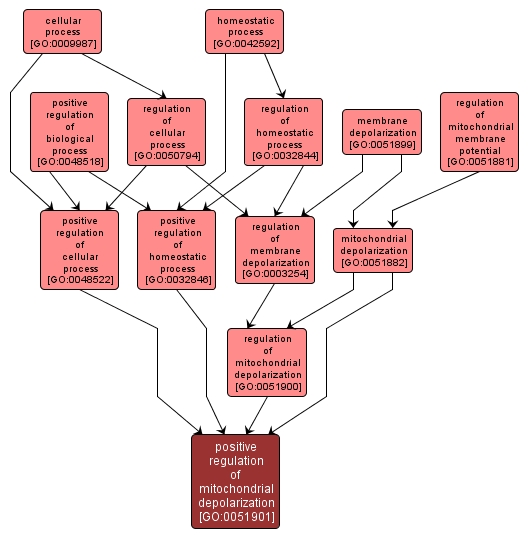GO TERM SUMMARY
|
| Name: |
positive regulation of mitochondrial depolarization |
| Acc: |
GO:0051901 |
| Aspect: |
Biological Process |
| Desc: |
Any process that activates, maintains or increases the frequency, rate or extent of the change in the membrane potential of the mitochondria from negative to positive. |
Synonyms:
- stimulation of mitochondrial depolarization
- activation of mitochondrial depolarization
- up regulation of mitochondrial depolarization
- up-regulation of mitochondrial depolarization
- upregulation of mitochondrial depolarization
|
|

|
INTERACTIVE GO GRAPH
|














